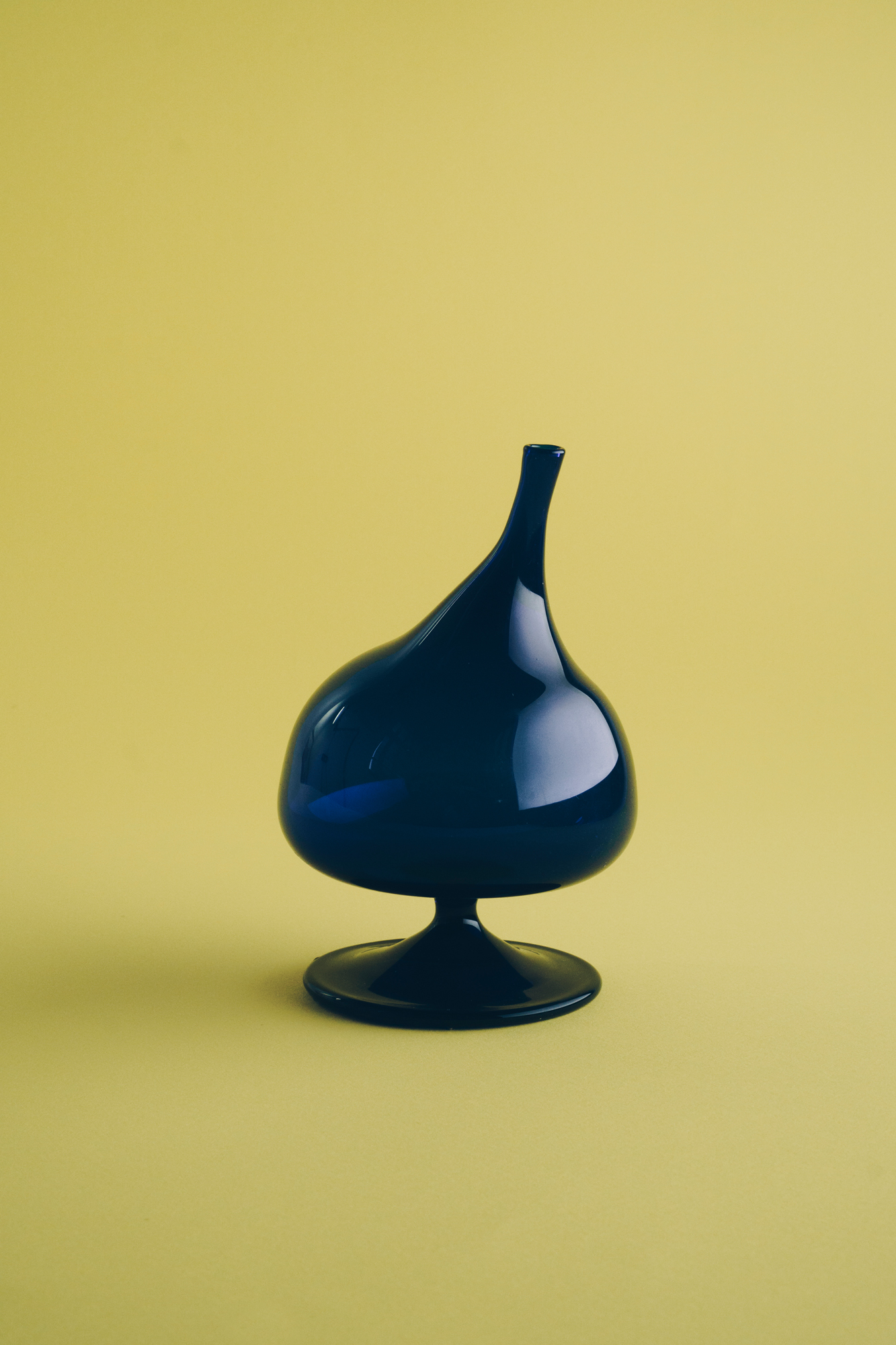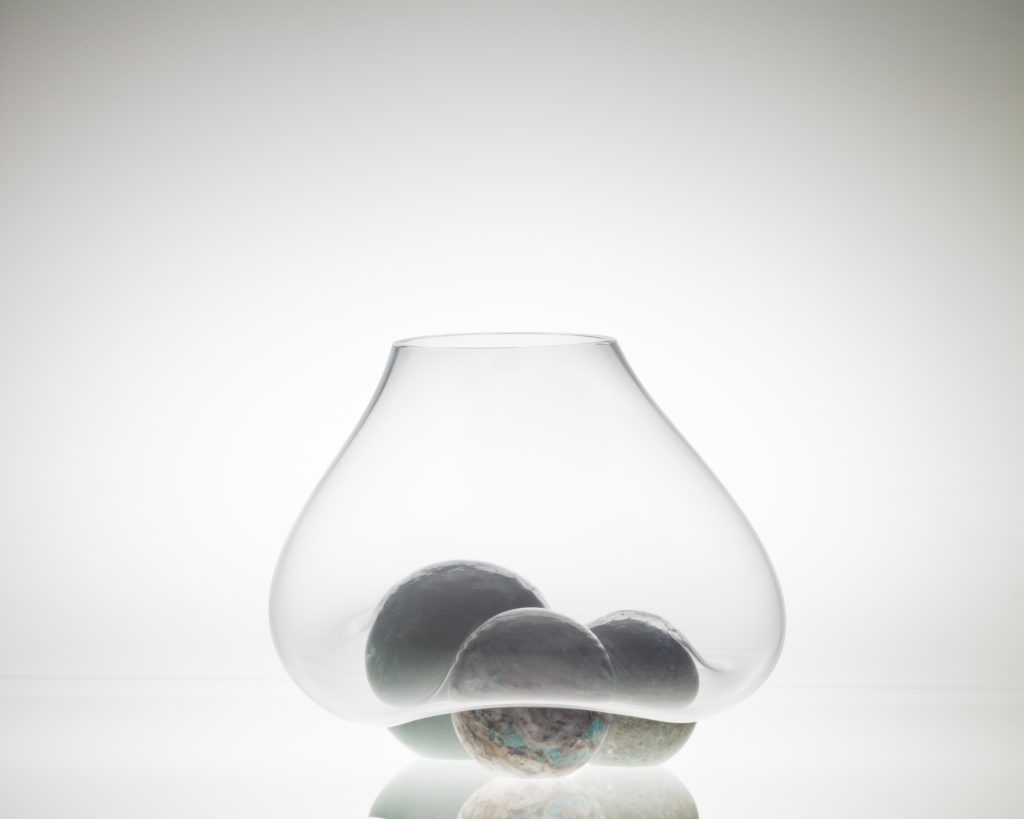
Transparent Creation: 10 Pieces That Showcase the Fluidity of Contemporary Glass-Making
Typically considered to be a material that requires caution when one is in its presence, glass is most often seen as fragile and not something that is easy to work with. However, designers who use glass in their pieces know and appreciate what it is capable of. This week’s edit showcases a variety of glass-making techniques and the unique collectible pieces that have been created using them.
Glass has been used throughout human history to create everything from jewelry to mirrors to sculptures. In the modern day, thanks to innovations in technology and contemporary designers willing to push the boundaries and experiment, there is no shortage of glass-making techniques. As seen below, it is a material that can be fused with other materials, stained with vibrant colours, and moulded into a wide variety of shapes. These designers have taken a material commonly viewed as frail and used it to create stunning, dynamic works of art.
This glass-making edit features the work of Andreas Berlin, Artis Nimanis, Bigtime Studio, Carol Gay, FIELDS, Hollow Forms, Karen Klim, Kim Thomé, Maret Sarapu, and Sophia Taillet.
Glassblowing: Hollow Forms, “Alienation”
















These sculptural vessels are part of the core collection of Hollow Forms titled “Alienation”, designed and produced in Palestine in collaboration with local expert craftsmen that have developed a family glassblowing business for generations. The form is designed using 3D architecture software that was used to communicate the design with the glassblowers. The form itself is inspired by ancient glass vessels found in the Levant.
View Hollow Forms’ showroom, including Alienation 3 (€370 ex. VAT)
Casting: Carol Gay, “Esférico Vase”
“ESFERICO” explores the limits of glass deformation with experimentation during the craft process of glassblowing. The idea was to intervene on the round shape, resulting of the artisan blowing, making provocations to the traditional process of making serial pieces. The deformation is the result of the interference of three crystal balls in different sizes used as a mould.
View Carol Gay’s showroom, including “Esférico Vase” (€1.200 – 1.800 ex. VAT)
Cold Working: Maret Sarapu, “Closet Ostrich. Group”
These works hide and conceal, but mainly themselves. While they are eye-catching and purposefully beautiful, they are not easily grasped. As the viewer moves in space and time, the pieces, too, change in an instant. Here, glass attaches the world to itself but fragments the surroundings and flings out new reflections and shapes – it is the dynamic nature of beauty that makes it so captivating.
View Maret Sarapu’s showroom, including “Closet Ostrich. Group” (€6.000 ex. VAT)
Cutting: Kim Thomé, “Panes” Vase




Different coloured glass are glued to make up the structure of this vase. The panes vary in colour giving different colours depending where it is viewed from. This vase is part of a series of other forms exploring glass as a structural material on smaller scales. The series will explore glass as vessels, structures, and objects within a domestic realm.
View Kim Thomé’s showroom, including “Panes” Vase (€450 ex. VAT)
Fusing: Artis Nimanis, “MOON” Glass Bowl
Each an&angel bowl is an individual work of art, mouth-blown using melted glass that comes in various colours and utilizing a technique of fusing two to four layers of glass into one. The special layering technique also allows light to flow between the layers of glass, giving each an&angel bowl a distinct brilliance and style.
View Artis Nimanis’ showroom, including “MOON” Glass Bowl (€214,40 ex. VAT)
Hot Forming: Karen Klim, “Frostskog/Frozen Woodland” Glass Vessel/Vase/Sculpture
“Frostskog/Frozen Woodland” is a glass sculpture/vase made from blown and hot-formed glass, sandblasted, cut and partially polished. Made by Karen Klim, a glass artist based in Oslo, Norway. This work reflects nature during the winter season.
View Karen Klim’s showroom, including “Frostskog/Frozen Woodland” Glass Vessel/Vase/Sculpture” (€1.120 ex. VAT)
Moulding: FIELDS, “FIRE & ICE” Glass Candle Holders – Pair 01
The design of “Fire & Ice” exemplifies FIELDS’ signature methodology, which utilizes a pattern-based geometric generated by computational design. Production is realized through a mix of digital fabrication and glass-making handcraft: a digitally fabricated mould for each pair is used to hand cast each piece in artisan glass. With both polished and frosted areas, the pieces create an interplay of form and texture as the frosted surfaces seem to gently wrap around the monolithic, clear-glass volumes.
View FIELDS’ showroom, including “FIRE & ICE” Glass Candle Holders – Pair 01 (€343 ex. VAT)
Staining: Bigtime Studio, “Fire Stained Glass”
This stained glass window was presented in a small chapel in the south of France, more precisely in Arles, called the Chapel of the Madeleine. It was inspired by the famous stained glass works of the nearby standing Saint-Trophime Cathedral of Arles. Its shapes, colours, and patterns evoke the movement of a virulent fire. Each piece of glass is different and has been selected for its colour, but also its level of transparency and the way light shines through the patterns created by the mouth-blown glass.
View Bigtime Studio’s showroom, including “Fire Stained Glass” (€3.500 ex. VAT)
Thermoforming: Sophia Taillet, “Curve” Table – Black




This object was imagined during a glass-making residency in France. Inspired by the flexibility and transparency of glass, the “Curve Table” seeks to reveal the essence of this material. A material whose visual sensations are very close to water, through its reflection, its transparency, and this sensation of visual movement. It uses glass thermoforming techniques which consist of bending a glass plate at high temperature.
View Sophia Taillet’s showroom, including “Curve” Table – Black (€6.800 ex. VAT)
Upcycling: Andreas Berlin, “Saturn 218d” Wall Mirror
For Andreas Berlin, the biscuit-filled glass bowl on the old black wooden table was the object of desire when he visited his grandmother. He wanted to conserve and transform this memory when he started building the objects, “Saturn”, with the glass bowls. The attachment of the vintage glass bowls is done with screws and dowels on the wall. The mirror surfaces are held by magnets “floating” in the shells. Each glass bowl has a tailored construction.
View Andreas Berlin’s showroom, including “Saturn 218d” Wall Mirror (€160 ex. VAT)












